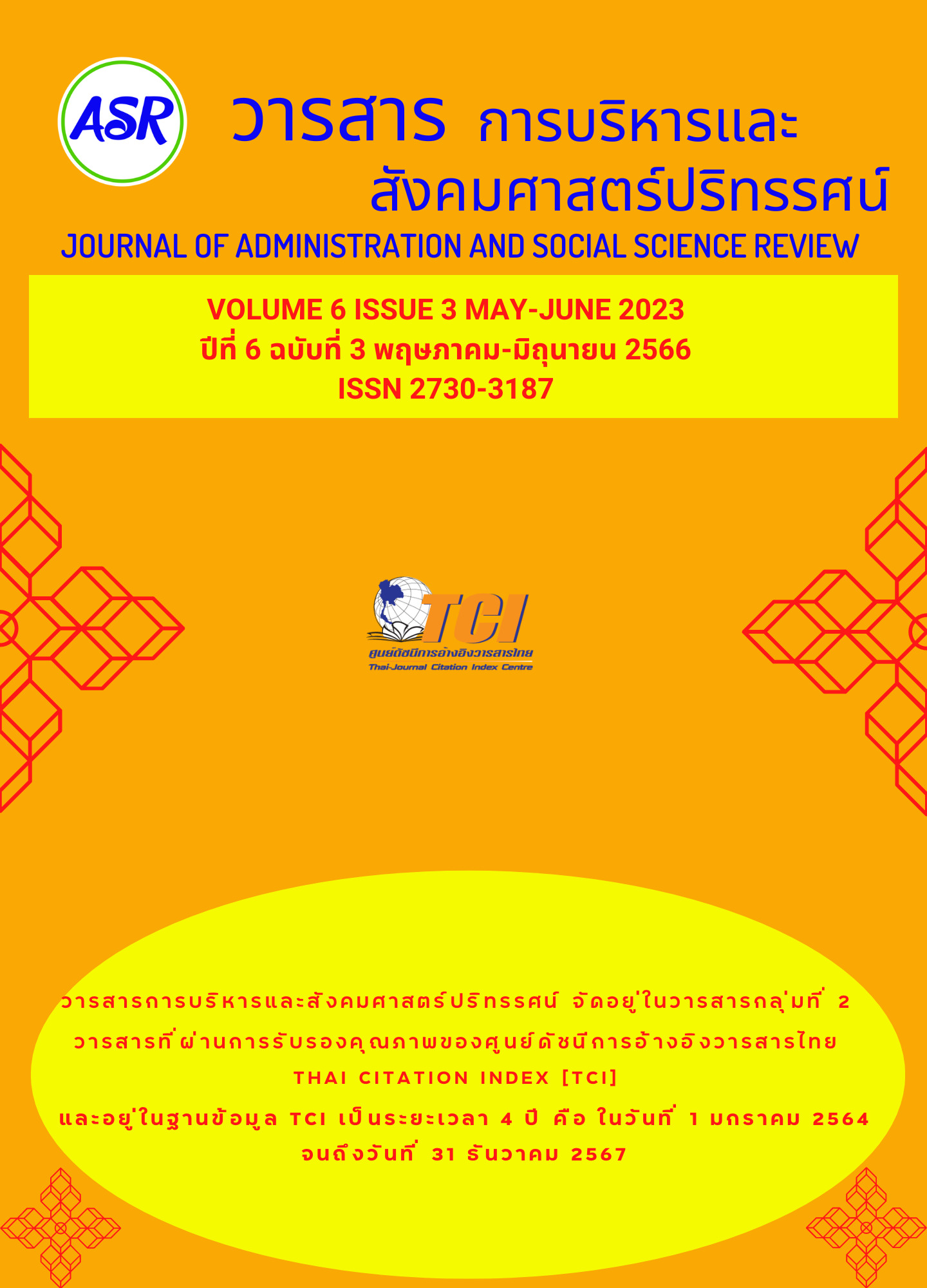Technology Acceptance and Risk Perceptions Affecting Gen Z Consumers’ Intention of Payment with a QR Code in Muang District, Chiang Rai
Keywords:
technology acceptance, risk perceptions, intention of payment with a QR codeAbstract
This research aimed to study: 1) the levels of technology acceptance, risk perceptions and intention of payment with a QR Code, 2) technology acceptance and risk perceptions affecting Gen Z consumers’ intention of payment with a QR Code in Muang district, Chiang Rai. The sample size consisted of 400 people. The instruments were the questionnaires and the assessment ratio with five levels, including technology acceptance, risk perception and intention of payment with a QR Code with the reliability at 0.924, 0.915 and 0.945 respectively. The statistical tools used in data analysis were percentage (%), mean (x), standard deviation (S.D.), and stepwise multiple regression method.
The results showed 1) the levels of technology acceptance were at high level (x = 4.40, SD = 0.262), the levels of risk perceptions were at high level (x = 4.51, SD = 0.242); and the levels of intention of payment with a QR Code were at high level (x = 4.48, SD = 0.215); and 2) technology acceptance of perceived ease of use (TA2), technology acceptance of perceived usefulness (TA1) , and perceived risk (R1) affected Gen Z consumers’ intention of payment with a QR Code in Muang district, Chiang Rai in overall (Ytot). Its statistical significance was at 0.01 level. The correlation coefficient was equal to 0.587. Effectiveness in the prediction was 34.5 %; and the standard deviation of the prediction was 0.201. An equation regression analysis was written in the following.
Ytot = 1.964 + 0.283 (TA2) + 0.144 (TA1) + 0.143 (R1)



